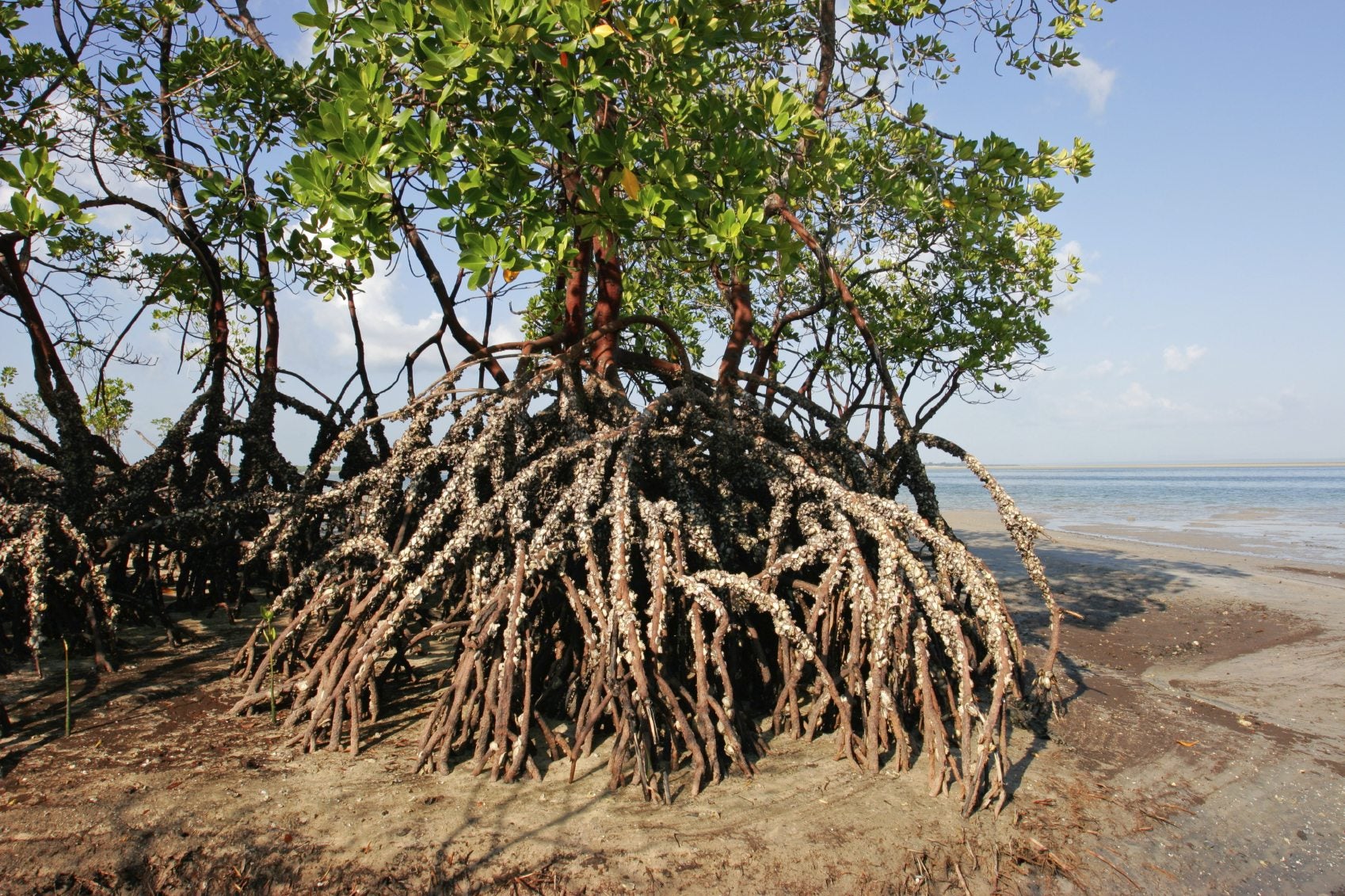Walking Trees: Nature’s Marvels Across the Globe
In the vast and diverse world of flora, trees are generally seen as stationary giants, rooted firmly in one place, embodying stability and endurance. However, there exist certain species of trees that challenge this perception. These trees, often referred to as “walking trees,” possess unique adaptations that allow them to move or give the illusion of movement in response to environmental conditions. While the term “walking tree” may sound mythical, it is grounded in the fascinating ways these trees interact with their surroundings. This essay will explore five such remarkable species: the Socratea exorrhiza (Walking Palm), Mangrove trees, Banyan trees, the Ice Tree, and the Dracaena cinnabari (Dragon’s Blood Tree). Each of these species demonstrates nature’s incredible ability to adapt and survive in various challenging environments across the globe.
1. Socratea exorrhiza (Walking Palm)


The most well-known of the “walking trees” is the Socratea exorrhiza, commonly known as the Walking Palm. Native to the tropical rainforests of Central and South America, particularly in countries like Costa Rica, Panama, Colombia, Ecuador, and Brazil, this tree has captivated the imagination of many due to its seemingly mobile nature. The Walking Palm is easily identifiable by its stilt-like roots, which extend several feet above the ground, resembling stilts or legs. These roots provide the tree with stability in the often unstable, waterlogged soils of the rainforest.
What truly sets the Walking Palm apart is its unique ability to “move.” Over time, the tree can shift its position by growing new roots in one direction while allowing older roots on the opposite side to die off. This gradual process, which can take several years, enables the tree to “walk” toward areas with more sunlight or nutrients. Although this movement is incredibly slow, it has inspired local legends and scientific curiosity alike. The Walking Palm plays a vital role in its ecosystem, contributing to soil stabilization and providing food and habitat for various animal species. Its wood is also valued by indigenous communities for its strength and durability, often used in construction.
2. Mangrove Trees

Mangrove trees are another group of species that exhibit a form of “walking” behavior, though in a different context. Found in coastal regions of tropical and subtropical areas around the world, including Southeast Asia, Africa, the Americas, and Oceania, mangroves are known for their complex root systems that extend above the water and soil surface. These roots, often referred to as “prop roots,” not only provide support in the soft, unstable mud of coastal environments but also facilitate the tree’s survival in saline conditions by filtering out salt.
Mangroves “walk” in a sense by gradually colonizing new areas of coastline. As their prop roots grow and extend, they stabilize the soil around them, allowing for new sediment to accumulate. Over time, this process enables the mangrove forest to expand further into the water, essentially “moving” the forest toward the sea. Mangroves play a crucial role in coastal ecosystems, providing habitat for a wide range of marine life, protecting shorelines from erosion, and acting as a buffer against storm surges. Their ability to “walk” and adapt to changing environmental conditions is a testament to their resilience and importance in maintaining coastal biodiversity.
3. Banyan Trees (Ficus benghalensis)


The Banyan tree, particularly the Ficus benghalensis species, is famous for its sprawling, interconnected root system that gives the appearance of multiple trees walking together. Native to the Indian subcontinent, the Banyan tree is considered sacred in many cultures and is often associated with longevity and eternal life. What makes the Banyan tree unique is its aerial roots, which grow down from the branches and take root in the ground, eventually becoming trunks themselves.
As these aerial roots establish themselves, they allow the Banyan tree to spread horizontally, covering vast areas and creating what seems like a forest of interconnected trunks. This growth pattern gives the illusion that the tree is “walking” across the landscape. Some Banyan trees can cover several acres and live for hundreds of years, providing shade and shelter to countless organisms. The Great Banyan tree in India, for example, covers an area of over 4 acres and is considered one of the largest living trees in the world. The Banyan’s ability to expand and adapt to its environment makes it a symbol of resilience and continuity in many cultures.
4. The Ice Tree
In more temperate and colder climates, the phenomenon of “walking trees” can be observed in what is often referred to as the “Ice Tree.” Although not a specific species, the term “Ice Tree” refers to trees that exhibit a slow, creeping movement due to frost heave and soil creep. This phenomenon is particularly common in areas with permafrost or regions that experience repeated freezing and thawing cycles.
As the ground freezes, the soil expands, pushing the tree’s roots upward. When the ground thaws, the soil contracts, and the tree may shift slightly downward or laterally. Over many years, this repeated freeze-thaw cycle can cause the tree to “walk” or shift position. While this movement is not as noticeable as that of the Walking Palm or Mangrove trees, it is a fascinating example of how trees adapt to their environment, even in the harshest conditions. The Ice Tree’s slow migration is a reminder of the dynamic interactions between trees and their surroundings, even in seemingly static environments.
5. Dracaena cinnabari (Dragon’s Blood Tree)

The Dracaena cinnabari, commonly known as the Dragon’s Blood Tree, is another unique tree that exhibits characteristics akin to “walking.” Native to the Socotra Archipelago in Yemen, this tree is famous for its umbrella-like shape and the red resin it produces, known as “dragon’s blood.” The tree’s name is derived from this resin, which has been used for centuries in medicine, art, and ritual.
The Dragon’s Blood Tree is adapted to the arid, rocky conditions of Socotra, where water is scarce, and the soil is often shallow. Its roots are specially adapted to seek out water in the harsh environment, allowing the tree to survive in conditions where few other species can thrive. While the Dragon’s Blood Tree does not “walk” in the same sense as the Walking Palm or Mangrove trees, its ability to extend its roots far beyond its trunk in search of water and nutrients gives it a form of movement that is essential for its survival. The tree’s unique adaptations and striking appearance make it a symbol of endurance and resilience in one of the most challenging environments on Earth.
Conclusion
The concept of “walking trees” is a fascinating exploration of how different tree species have adapted to their environments in ways that challenge our traditional understanding of trees as immobile organisms. From the Socratea exorrhiza, with its stilt-like roots that allow it to “walk” toward better resources, to the Mangroves that expand their territory into the sea, and the Banyan tree that creates sprawling networks of roots and trunks, these trees demonstrate nature’s incredible capacity for innovation and survival.
Even in colder climates, the slow, creeping movement of the Ice Tree and the resource-seeking behavior of the Dragon’s Blood Tree illustrate how trees interact dynamically with their environment, constantly adapting to changing conditions. These walking trees remind us that the natural world is far more complex and interconnected than it may seem, with even the most rooted of organisms displaying a surprising degree of movement and adaptability.
Understanding these trees not only deepens our appreciation for the diversity of life on Earth but also highlights the importance of conserving these unique species and their habitats. As we continue to study and learn from these remarkable trees, they inspire us to think differently about the natural world and our place within it, encouraging a deeper respect for the delicate balance of life that sustains us all.

Get involved!
Comments